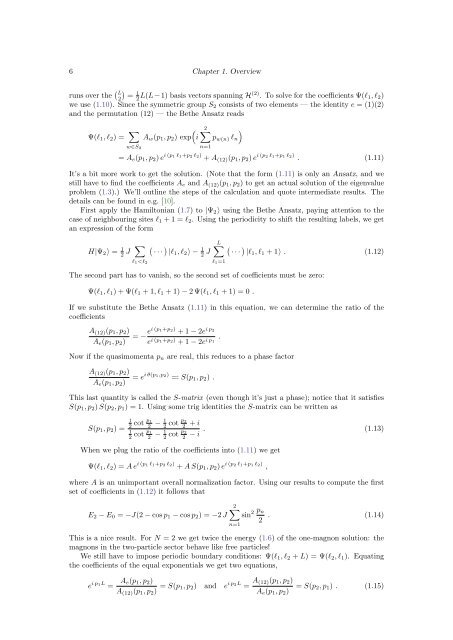The Bethe/Gauge Correspondence
The Bethe/Gauge Correspondence
The Bethe/Gauge Correspondence
You also want an ePaper? Increase the reach of your titles
YUMPU automatically turns print PDFs into web optimized ePapers that Google loves.
6 Chapter 1. Overviewruns over the ( )L2 =12 L(L−1) basis vectors spanning H(2) . To solve for the coefficients Ψ(l 1 , l 2 )we use (1.10). Since the symmetric group S 2 consists of two elements — the identity e = (1)(2)and the permutation (12) — the <strong>Bethe</strong> Ansatz readsΨ(l 1 , l 2 ) = ∑ (A w (p 1 , p 2 ) exp iw∈S 22∑ )p w(n) l nn=1= A e (p 1 , p 2 ) e i (p1 l1+p2 l2) + A (12) (p 1 , p 2 ) e i (p2 l1+p1 l2) . (1.11)It’s a bit more work to get the solution. (Note that the form (1.11) is only an Ansatz, and westill have to find the coefficients A e and A (12) (p 1 , p 2 ) to get an actual solution of the eigenvalueproblem (1.3).) We’ll outline the steps of the calculation and quote intermediate results. <strong>The</strong>details can be found in e.g. [10].First apply the Hamiltonian (1.7) to |Ψ 2 〉 using the <strong>Bethe</strong> Ansatz, paying attention to thecase of neighbouring sites l 1 + 1 = l 2 . Using the periodicity to shift the resulting labels, we getan expression of the formH|Ψ 2 〉 = 1 2 J ∑l 1
















